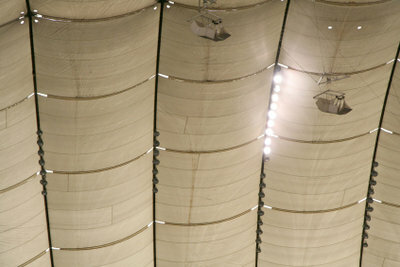Tension awnings on the balcony
For many, a shade sail is the ideal alternative to an awning. The awning has a decisive advantage and this would be the lower price level. But when it comes to providing shade, the awning is in no way inferior to the awning. Many think that tensioning the awning is not easy, but you don't need to be afraid of that, because it is not that difficult.

What you need:
- Awning kit
- Attachment points
How to stretch a shade sail
A shade sail provides pleasant shade on hot and sunny days with little effort. Because the sun is beautiful, but not always healthy.
- First you need to measure the size of the shade sail.
- To do this, you have to measure the attachment points to which the sun sail is attached.
- It makes sense if you draw up a plan to take it to the specialty store so nothing can go wrong.
- Also, think about how high you can go with the awning.
- Make sure that the awning has attachment points where a firm hold is guaranteed.
- Only when the assembly has been carried out can the awning be tensioned.
There are plenty of shade providers, some of which are bad on small balconies ...
The last but important step - tensioning the awning
- The assembly is carried out according to the instructions. First, attach the fixed points to the wall.
- Now you should lay out the sail on the ground to have a better overview.
- In every kit there are fastening materials for the awning and the tensioning of the sail, which make it easier. The sail has included tensioning screws, you must now make sure that these are unscrewed.
- Now go with the sail to the first corner of the fastening and hook the awning there using the tensioning screw. With the rope attached to the screw, the first corner of the sail is knotted and fixed to the attachment.
- Now go to the second corner with the sail and repeat this process. Do the same at corners three and four.
- When all corners are fixed, you now have to tighten the tensioning screws. And so firmly until the tension you want is achieved.
A tip at the end: do not stretch the awning too tight so that it can withstand the wind. In addition, it is good if the awning is attached in such a way that it hangs at an angle, because if it rains the sail could otherwise hold up the water and cause the awning to burst.
How helpful do you find this article?

